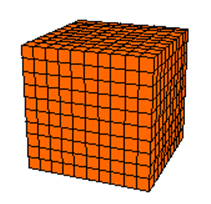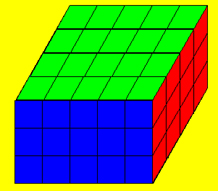
In previous studies, you may have developed formulas for finding the surface area of rectangular prisms, triangular prisms, cylinders, and pyramids. You may also have developed formulas for finding the volume of prisms, pyramids, cylinders, cones, and spheres.
In this lesson, you will focus on reading and interpreting problems involving surface area and volume. You will have to decide if the problem requires you to determine the surface area or the volume. You may also have to convert units within or between measurement systems in order to solve the problem.
Before you begin, recall the definitions of surface area and volume.

Surface area is a measure that tells you the number of square units it will take to completely cover the surfaces of a 3-dimensional figure. Surface area is an exterior attribute of a 3-dimensional figure; that is, it describes the size of the surfaces (outside) of the 3-dimensional figure. There are also several different types of surface area.
You may also be asked to determine the combined areas of only a few surfaces.

Volume is a measure that tells you the number of cubic units that will fit completely inside the 3-dimensional figure. Rectangular prisms can be used to show volume nicely, since they can be literally constructed out of smaller cubes.